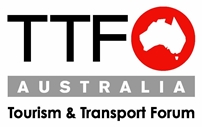
Sydney ahead of the pack on key public transport indicator
Sydney is leading the nation when it comes to public transport, with a growing number of people ditching the car to catch the city’s trains and ferries, according to a new report released by the Tourism & Transport Forum Australia (TTF) and L.E.K. Consulting.
The report also shows Melbourne public transport users have been big winners in recent years, with the Victorian capital recording the best on-time running improvements. But Queensland is lagging behind the other states in providing key annual public transport data to allow comparative assessment of its performance in this area.
The TTF-L.E.K. Consulting Public Transport Barometer: a review of public transport indicators for Australia (July 2015) is a new six-monthly report that provides up-to-date insights into the performance of major metropolitan public transport networks in Australia. The Barometer is being launched today at the TTF/UITPANZ 2015 Australian Transport Summit in Sydney.
“Sydney is falling back in love with public transport,” TTF CEO Margy Osmond said.
“Our report shows more Sydneysiders are now catching the train or ferry than was the case a few years ago.
“Sydney is now the best-performing capital city in terms of patronage with strong growth in rail and ferry over the past three years.
“This increased patronage reflects the NSW Government’s reforms in public transport, including the introduction of the Opal Card, the franchising of Sydney Ferries and the demerging of Sydney Trains and NSW Trains.
“With the light rail and Sydney Metro coming on-line soon, we expect even more Sydneysiders to embrace public transport in the years to come,” she said.
Simon Barrett, Chair of L.E.K. Consulting in Australia, said punctuality across all forms of transport is generally continuing to improve, with Melbourne’s rail system seeing the biggest improvements.
“In good news for Melbourne commuters, we have seen a major increase in train punctuality, which is up 7.2 per cent in the last three years,” he said.
“However, patronage growth has slowed over the last three years. To strengthen growth, infrastructure upgrades are needed to increase rail and tram patronage, as well as increasing tram reliability.
“In Perth, we have seen strong growth in bus patronage over the past three years and punctuality over the past year, but there is room for improvement in the performance of the city’s rail and ferry network.
“In Adelaide, there has been a rebound in rail patronage, with 14.6 per cent more people using the rail network, although the punctuality of rail services has declined in the past year,” he said.
The Transport Barometer also highlights the need to make public transport more financially sustainable.
“Australia’s public transport is one of the most heavily subsidised in the world, with taxpayers paying for as much as 78 per cent of every fare,” TTF CEO Margy Osmond said.
“While the public expects a certain level of subsidisation, we can make public transport more sustainable and more capable of meeting increases in population and economic activity, by increasing revenue and reducing costs.
“To achieve this, we suggest reducing costs through improving asset and workforce productivity, network optimisation and bus franchising.
“We can also increase the revenue generated by public transport by optimising fare structures, reducing fare evasion and exploring other avenues such as transport-related commercial development and advertising,” she said.
Ms Osmond said she looked forward to Queensland providing more up to date public transport data. It last provided annual data by mode in 2012.
“I would encourage the new Queensland Government to reverse the former Newman Government’s decision to stop the release of a complete set of key performance data about its public transport network,” she said.
